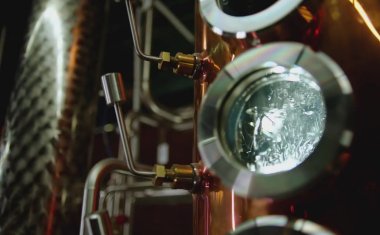Sustainability and Energy Efficiency at a Turning Point
Flow chemistry was named as one of the ten technologies that have the potential to make our planet more sustainable in 2019 by the IUPAC.
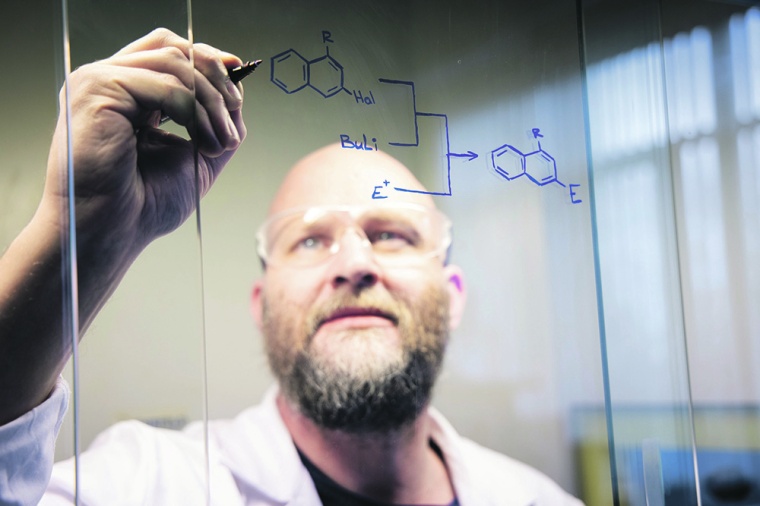
Flow chemistry was named as one of the ten technologies that have the potential to make our planet more sustainable in 2019 by the IUPAC. But what does more sustainable actually mean? And how can flow chemistry contribute to this?
Flow chemistry, and particularly microreaction technology, is a technology platform that consists of carrying out chemical reactions in a continuous flow rather than in traditional batch reactors. It offers major advantages over conventional methods in various aspects, such as optimum heat and mass transfer, safety, scalability, selectivity and productivity. In addition, flow chemistry can also contribute to sustainability and energy efficiency goals by reducing the environmental impact and carbon footprint of chemical production.
The need to reduce global CO2 emissions has become increasingly important in recent years as climate change has become one of the greatest challenges of our time. The chemical industry plays a crucial role in the transition to more sustainable practices. Reducing the carbon footprint requires innovative approaches to minimize energy consumption and implementation of alternative, more sustainable production methods.
„Compared to conventional batch processes, flow chemistry enables more accurate control of reaction conditions.“
One of the basic strategies for reducing CO2 emissions is to increase energy efficiency in chemical production plants. This includes the optimization of processes, the use of energy-efficient technologies and implementation of heat recovery systems to minimize overall energy consumption. Compared to conventional batch processes, flow chemistry enables more accurate control of reaction conditions. Continuous mixing and temperature management minimize unwanted side reactions, resulting in increased energy efficiency and thus in reduction of CO2 emissions.
In chemical industries, energy costs for downstream processing amount to approx. 40–80% of the total costs. Up to 56% of the material used in active pharmaceutical ingredient production are solvents which are responsible for approximately 50% of greenhouse gas emissions in active pharmaceutical ingredient production. Precise control of process conditions minimizes the formation of side products, therefore reducing the required downstream effort. In addition, solvent waste is avoided. These aspects not only support ecological goals, but also offer economic advantages through more efficient use of resources.
Flow chemistry enables fast reaction times as mixing and heat transfer are greatly enhanced. This leads to increased productivity and enables the production of chemicals in less time, which in turn reduces energy consumption and lowers the CO2 footprint.
A visible example in the US is Sanofi’s continuous manufacturing plant in Framingham, Massachusetts, which is producing 80% less carbon dioxide emissions compared to the company’s first-generation facility and reduces water and chemical usage by 91% and 94%, respectively, according to details released by the company.
Another, increasingly important benefit is that flow chemistry can improve supply chain integration and optimization by enabling modular, flexible and distributed production. It reduces the need for large-scale facilities, storage sites and transportation networks, which lowers capital and operating costs as well as environmental impact. It also facilitates the adaptation of production to demand and resource availability by using smart sensors, data analytics and digital platforms. Shorter reaction times compared to traditional batch processes help to reduce overall production time, which in turn shortens delivery times. Accelerating production cycles increases flexibility in the supply chain and allows companies to respond more quickly to market changes. If a production process needs to be adjusted due to increasing demand or changing market conditions, the technology enables a faster and more flexible changeover. This in turn helps to minimize bottlenecks in the supply chain and ensure a more efficient use of resources.
“Flow chemistry enables fast reaction times as mixing and heat transfer are greatly enhanced.”
Here too, the precise control of reaction conditions in flow chemistry systems ensures more efficient use of raw materials. Lower material usage and fewer waste products often also mean lower costs in the supply chain. Continuous production reduces the need for high stock levels. Storage costs are minimized while ensuring that products are fresh and available on demand. Companies integrating this technology can better adapt to dynamic market requirements and at the same time fulfill their ecological responsibility. This promotes customized solutions and supports the supply chain in responding flexibly to the diverse needs of customers. The evolution of supply chains in the chemical industry is in full swing, and flow chemistry is playing a key role in this transformation process.
Summarizing all the advantages of flow chemistry or microreaction technology at a glance:
- Efficient use of resources
- Lower energy consumption
- Reduction of waste quantities
- Time and space savings
- Increased safety by avoiding hazardous reaction conditions
- More flexibility and simplified scalability
Ehrfeld Mikrotechnik has the perfect, industrially applied example in China with a production throuput of 30 kt/y. As just summarized, this example perfectly illustrates all the advantages of flow chemistry and microreaction technology.
“The evolution of supply chains in the chemical industry is in full swing, and flow chemistry is playing a key role in this transformation process.”
Due to the use of our flow reactor technology, the yield was increased by 41% from 70% to 99%, leading to nearly no waste quantities in comparison to the former batch process. Additionally, no further energy intensive down-stream process is needed. The obtained product solution is directly used in the following process step without any purification step. This efficient use of resources is essential for sustainable development, ensuring to meet present needs. Furthermore, the use of the continuous process eliminates the need for heating and cooling phases of the batches. A cooling machine provides the necessary cooling capacity and therefore no further steam (former amount of 8000 t/y) as heating/cooling media is needed. Electricity as utility media is used exclusively. The overall power consumption was reduced by a factor of nearly 80 to 3.6 kWh/t. The safety risk of the used highly hazardous chemicals is reduced by a factor of 1,000 in terms of reactor volume of only 150 L and a factor of 130 in terms of footprint (only 75 m² production area is necessary) providing a production capacity of 30 kt/y.
Looking ahead: Continuous research and innovation in flow chemistry play a key role in advancing sustainable practices. New materials, advanced control technologies and improved reactor designs can increase efficiency while minimizing environmental impact. This is exactly where Ehrfeld Mikrotechnik comes in. It is not only the continuous further development of our high-performance reactors, but above all the overall package of comprehensive service and equipment that makes the big difference. We support our customers worldwide with a holistic solution concept from the laboratory to the production of several cubic meters per hour in continuous flow.
References to this article can be requested from the authors.
Anne Lakmanaarachchi, Head of Marketing, and Joachim Heck, Managing Director, Ehrfeld Mikrotechnik GmbH, Wendelsheim, Germany
Rafael Kuwertz, Director, Ehrfeld Process Technology Co. Ltd.,
Shanghai, China
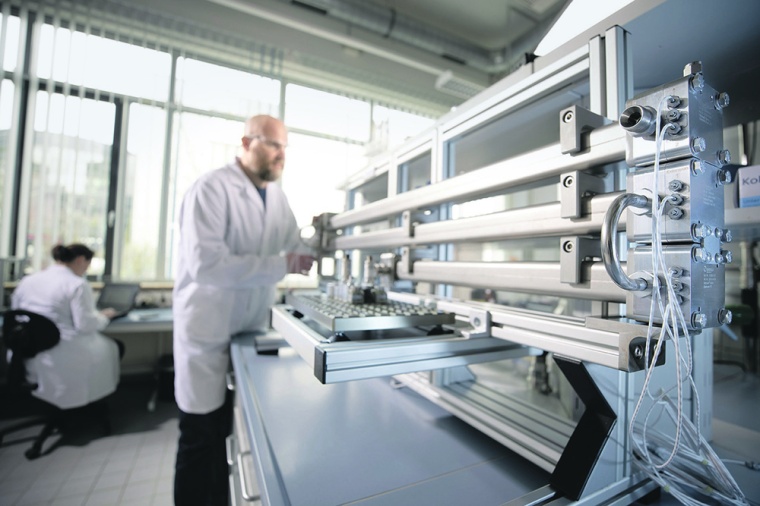
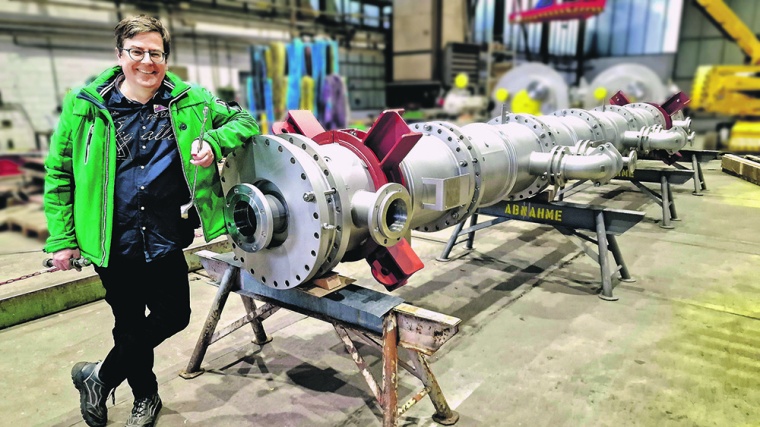
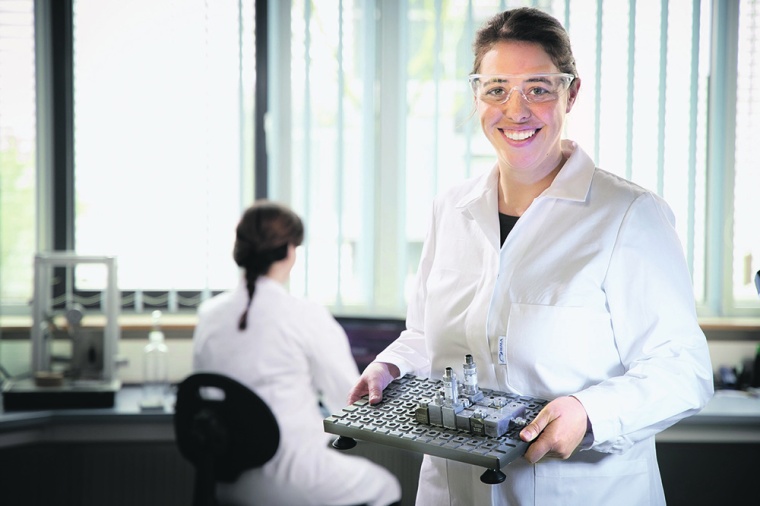



most read

Dow to Shut Down Three Upstream European Assets
Building on the April 2025 announcement, Dow will take actions across its three operating segments to support European profitability, resulting in the closure of sites in Germany and the UK.
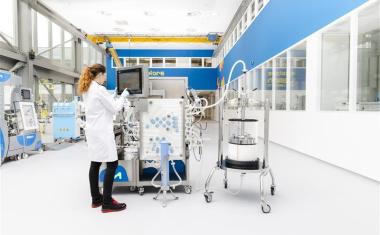
Merck Acquires Chromatography Business from JSR Life Sciences
Merck to acquire the chromatography business of JSR Life Sciences, a leading provider of CDMO services, preclinical and translational clinical research, and bioprocessing solutions.

VCI Welcomes US-EU Customs Deal
The German Chemical Industry Association (VCI) welcomes the fact that Ursula von der Leyen, President of the European Commission, and US President Donald Trump have averted the danger of a trade war for the time being.

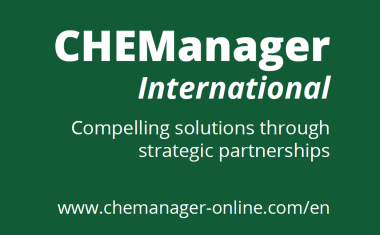
CHEManager International Media Kit 2026
Compelling solutions through strategic partnerships


